IIT Grad & IAS Officer Join Hands to Transform Education in Maoist-Hit Bihar District!
Such has been the success of this innovative project that the Centre is replicating it across 5,000 village schools in India!
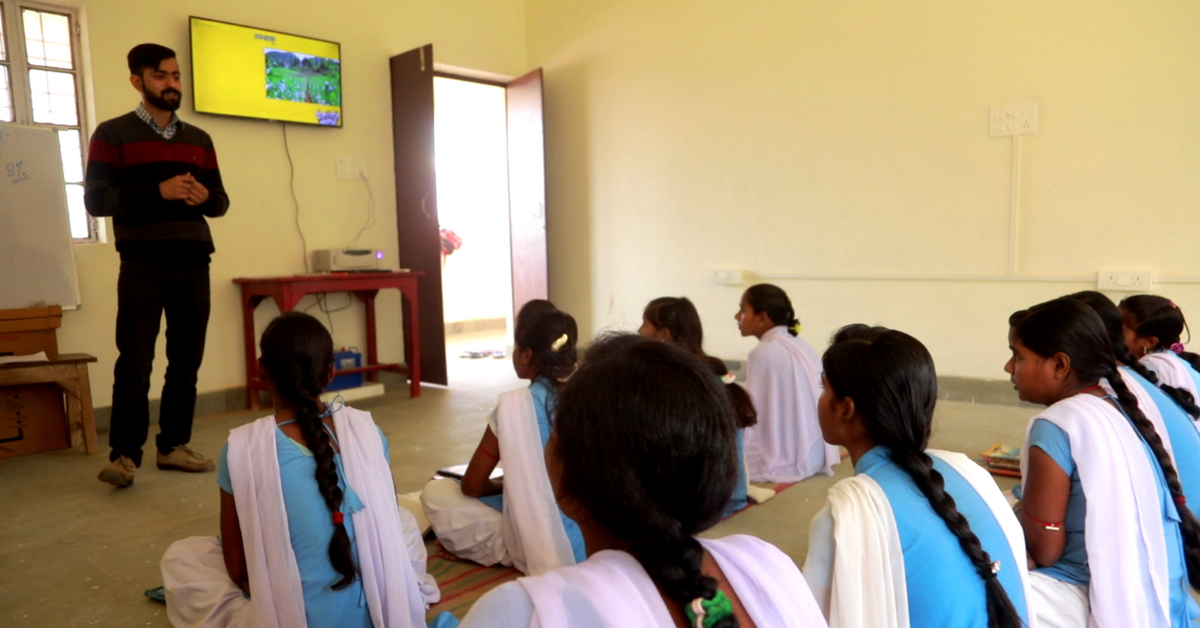
Experts have written thousands of column inches about ways to remedy our dismal public education system. Different state governments, district administrations and non-profits have devised interesting ways to improve our public education system. Admittedly some have worked, but not to the extent of what is going in the Naxal-affected Banka district of Bihar.
‘Banka Unnayan,’ a project devised by Kundan Kumar, the District Magistrate of Banka, and Eckovation, an education startup run by Ritesh Singh, a Chapra-born IIT Delhi graduate, is fostering an environment across public schools in the district that encourages active student and teacher participation, while building conceptual understanding through animated and interactive video lectures.
The attempt here is to move away from rote learning—a model that has clearly failed students, says Kumar. Sounds straightforward, right? Well, not really.
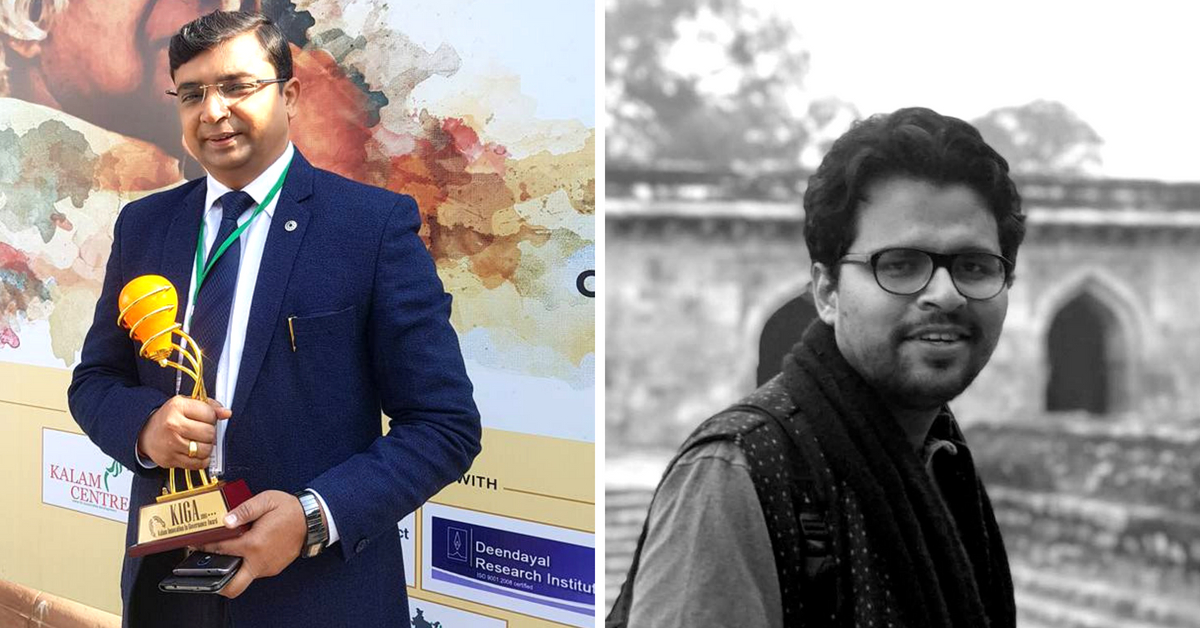
This is a district where the literacy rate is 58.17%, which is almost a shocking 12% below the national average of 70.04%.
Making matters harder, this district in the southeastern part of Bihar is marked by run-down schools with poor classrooms, not enough teachers and below par test scores.
However, things have changed rather rapidly since the implementation of Banka Unnayan project.
“The Unnayan project aims to deliver quality education through the integration of technology with a focus on ensuring continuous monitoring and accountability in the public education system. Here we use ICT to deliver contextualised videos-based learning modules, continuous and comprehensive evaluation of student performance and cohort learning facilities to students involving the use of Artificial Intelligence and Big Data Analytics,” says Ritesh Singh, speaking to The Better India.
From Monday to Saturday, across 143 senior secondary government schools in the district, students of Class 10 watch videos and slides cast on a television screen, for various subjects like science, maths and social studies up to 90 or 120 minutes.
Also Read: Leaving No One Behind: Here’s the Kind of Education That Can Transform India
Towards the end of these slides, bullet points recap all the essential features. The videos are kept very interactive, which ensures a good degree of attentiveness from the students. After the end of these video interactive sessions, students are given OMR sheets to fill up with five questions like a pop quiz. Instead of correcting it all by themselves, the teachers give students each other’s answer sheets and ask them to evaluate them. The results are then uploaded to the Eckovation app.
In addition to these daily tests, and depending on the subject, teachers conduct a 30-mark baseline test every Monday to assess what a child knows or can do at a certain point in time, as well as gaps in their learning. There is also an analysis test every Saturday to measure this process further.

“The third part of the model is Doubt Discussions. If the students face any doubt at any point of preparation, she can discuss her doubts with a team of experts on Eckovation Platform. Based on this performance data points, students are provided with AI-based recommendations to help them strengthen their weak topics. Eckovation’s AI built into the app, analyses each student’s performance while mapping it to the course curriculum and also benchmarking it with not just that district but with the countrywide data on the same curriculum, and generates unique, actionable feedback for every student. This feedback is then shared with the students first of all via push notifications, SMS and via the student help groups, which consists of teachers and experts from Eckovation,” explains Ritesh to The Better India.
This unique model covers all the three important needs of our public education system—responsiveness, transparency and efficiency.
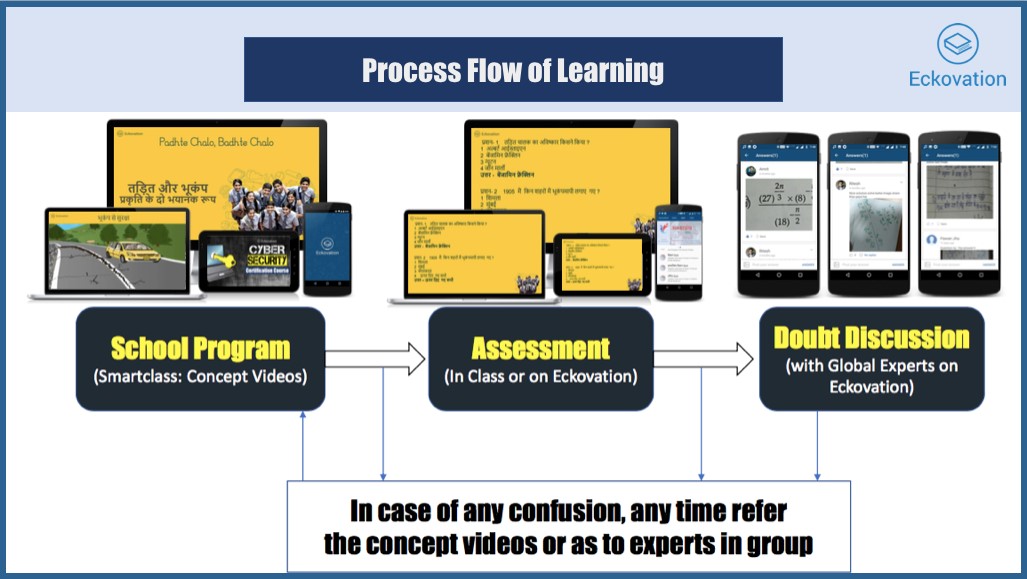
“All teachers and the education department can connect and communicate with Eckovation Team and District Administration. The problems faced in implementation are directly communicated to every tier of administration, thus minimising the communication gap. This also helped teachers getting recognition for their consequential efforts along with motivation and idea from other teachers,” says Ritesh.
Moreover, all the data collected by the app can be accessed by parents, students and district administration officials. The collection of all data on the app and subsequent assessment allows teachers and district officials to closely follow how students are faring in particular subjects, besides indicating which school or area in the district requires state intervention.
“I had experimented with a similar programme in Nalanda, where I was posted earlier. When I got transferred to Banka, I thought this is an ideal district to test the Unnayan concept. Anyone—parents, students, experts and people anywhere in the world—can download this app and interact with each other. What can be a better sight than a Katoria tribal student getting to interact with a student from the US,” Kumar told The Indian Express earlier this week.
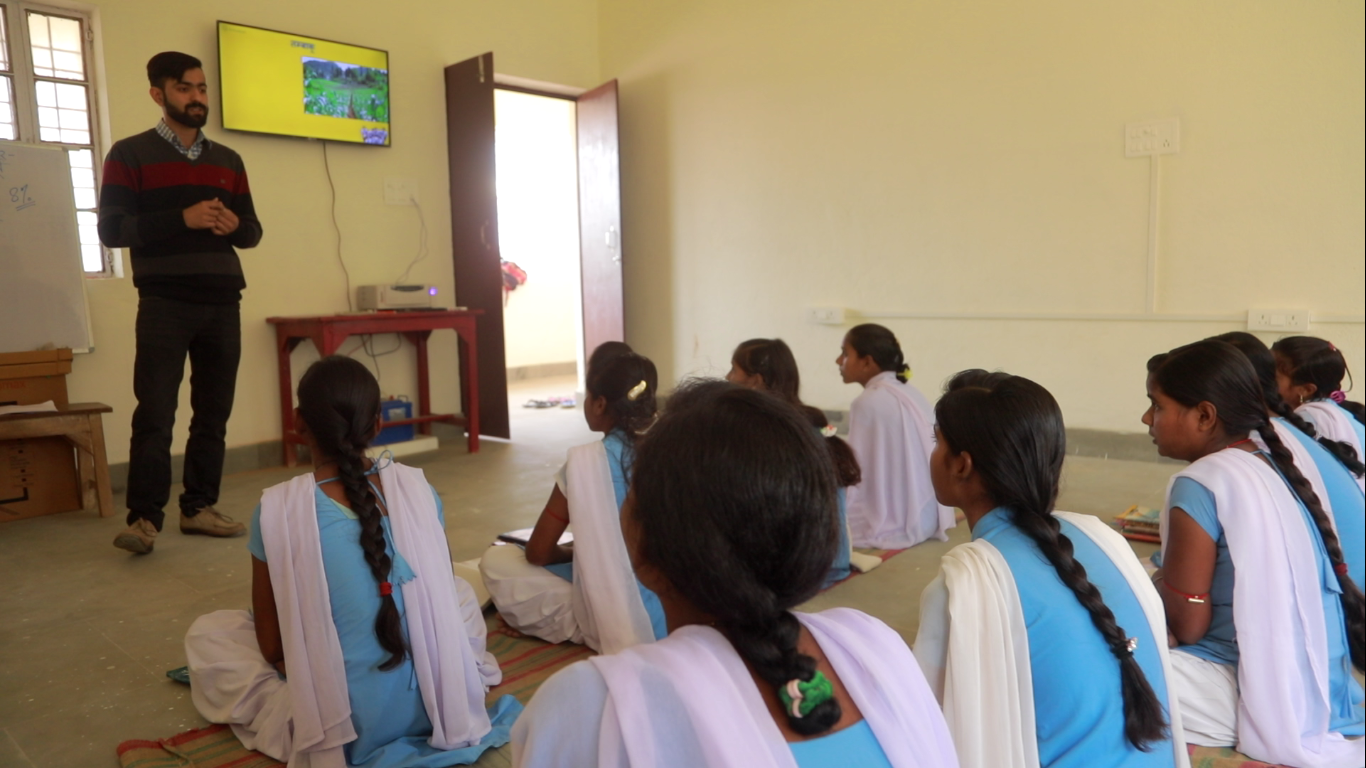
Early Days
The project began on a pilot basis across five schools in August 2017. A few months earlier in March when Kundan was still posted in Nalanda, he had reached out to Ritesh after reading about the success of the Eckovation app in various newspaper reports.
A few months following the initial call, Kundan was posted to Banka, and that’s when he invited Ritesh and the Eckovation team to conduct primary research and figure out a model that could work for his district. “Kundan was himself was involved in figuring out a possible solution. Together, we drafted the idea of Unnayan and its learning model,” says Ritesh.
When they first implemented the project in five schools, the attendance levels spiked and even test scores began to improve.
“The best part was that after a month of implementation, parents and teachers of different school went to District Magistrate Kundan’s office with the request of extending the Unnayan to other schools in the district. Following this plea, he decided to expand the initiative to 40 schools. From this academic year, the program is running in all 143 high schools of the district,” says Ritesh.
From the current academic year, the initiative has been expanded to Class 9 as well, and the aim is to further extend it to Classes 7, 11 and 12.
Why are they extending it to other classes?
Well, the results from the batch of Class X students from the initial 40 schools are clear.
“Schools with active Unnayan sessions like RMK High school has seen passing percentage improve from 58% (Academic Session 2016-17) to 92% (Academic Session 2017-18). Three students from the district are on the top 20 performing students list in the state.
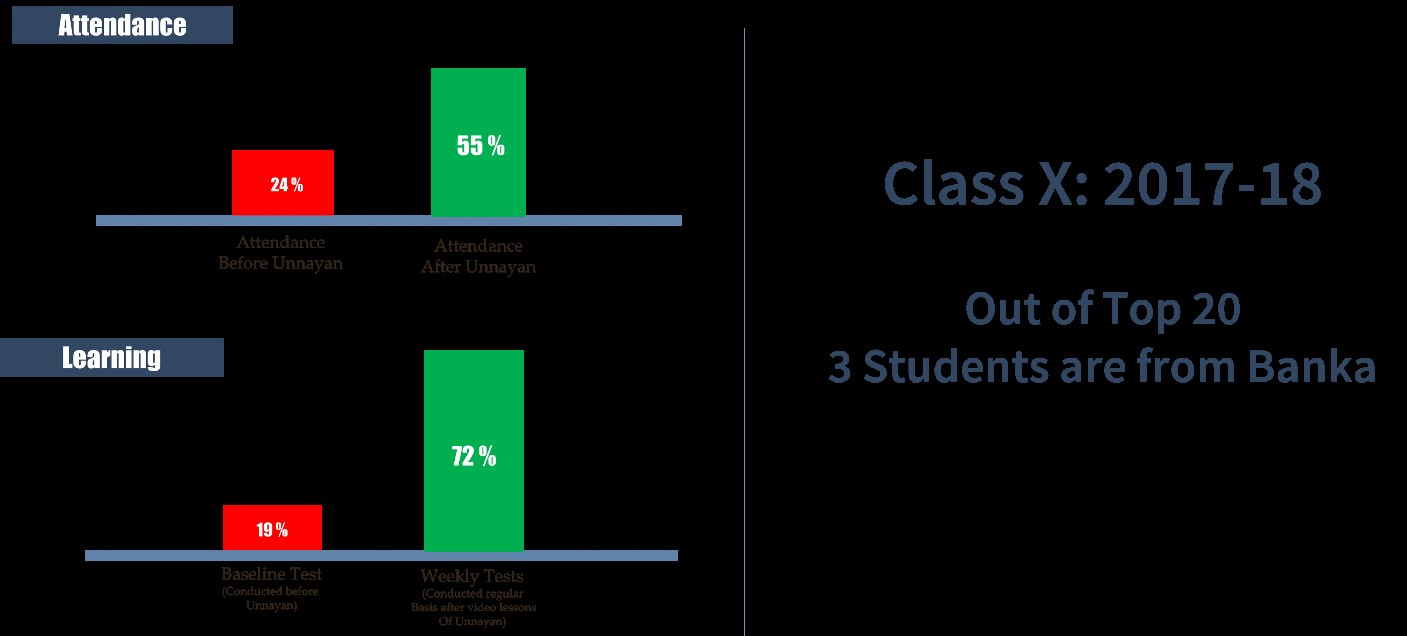
Meanwhile, in the Project Girls High School at Chandan, which was one of the first five schools initially chosen for the pilot, the pass percentage of Class 10 jumped by a whopping 25%. Attendance levels have risen to nearly 80% from the dismal 20-30% earlier,” says Ritesh.
Overall, out of 334 students who took the Class X exams last academic session, 152 passed—a 15% improvement from the year before.
Beyond bare numbers, however, what’s exceedingly heartening about the project is that children of farmers and daily wagers are truly experiencing the joy of learning.
Speaking to The Indian Express, Class 11 student Nazia Bano from Katoria school (another school chosen for the pilot last year), the daughter of a tailor whose father had passed away years ago, spoke of how Unnayan has brought back the joy of learning.
Also Read: Teaching Both Mud Bricks & Microchips, Unique School Is Now a Model for 65 Others
“After my father’s death several years ago, my mother encouraged me to take regular classes of Unnayan. The best thing about Unnayan is its story-telling method.” Nazia told the publication.
The success of this initiative, among others, has landed Eckovation various plaudits and awards. Earlier this year, it won the Prime Minister’s Excellence Award for Innovation, 2018. More recently, Eckovation received the Bihar Gaurav Samman award for the Unnayan project.
Meanwhile, District Magistrate Kundan Kumar won the Prime Minister’s Award for Excellence in Public Administration in April this year.
Despite the success of the Unnayan project, certain challenges remain. For example, because of the spurt in attendance levels, many schools in the district are struggling to fit in all their students. This is a serious concern raised by a few school principals who have adopted the project.

Having said that, the model set by the Banka Unnayan project shines a bright light on the future of public school education in India.
In fact, it was reported today in some publications that the Centre will implement the model across 5,000 village schools in India under its flagship scheme, Unnat Bharat Abhiyan. There is indeed hope for children who have long been left behind.
Click here if you want to read more about the Unnayan project.
(Edited by Gayatri Mishra)
Like this story? Or have something to share? Write to us: [email protected], or connect with us on Facebook and Twitter.
NEW: Click here to get positive news on WhatsApp!

Similar Story
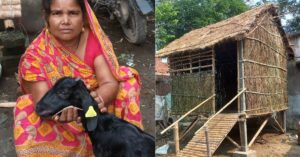
A Low-Cost, Bamboo Goat Shed Helps Cattle Rearers Save Livestock in Flood-Prone Bihar
The unique goat shed model by SEEDS India, a non-profit, has come to the rescue of impoverished cattle rearers. Costing as low as Rs 8,000, the first-of-its-kind model is designed to withstand floods, earthquakes, and even cyclonic storms.
Read more >
If you found our stories insightful, informative, or even just enjoyable, we invite you to consider making a voluntary payment to support the work we do at The Better India. Your contribution helps us continue producing quality content that educates, inspires, and drives positive change.
Choose one of the payment options below for your contribution-
By paying for the stories you value, you directly contribute to sustaining our efforts focused on making a difference in the world. Together, let's ensure that impactful stories continue to be told and shared, enriching lives and communities alike.
Thank you for your support. Here are some frequently asked questions you might find helpful to know why you are contributing?


This story made me
-
97
-
121
-
89
-
167













